✨You Can Touch the Times Square New Year's Eve Ball!
Find out how you can take home a piece of the old New Year's Eve ball!

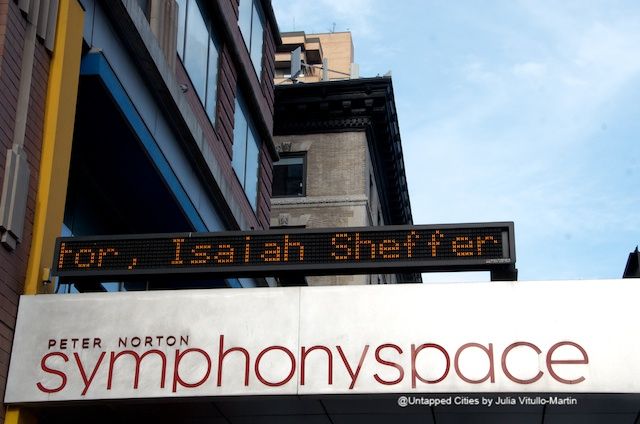
Many urban neighborhoods have tried to use culture as a transformative economic development tool. But few have succeeded as sensationally as Manhattan’s Upper West Side and its beloved performing arts center, Symphony Space–dubbed by the New York Times that “Upper West Side bastion of unconventional programming.” To understand the achievement we need to return to the dark, dismal days of the Symph’s founding–the late 1970s.
Some years are so dreadful or momentous that they come to stand for an entire era–1914, for example, when Archduke Franz Ferdinand was assassinated and World War I began, or, on a local scale for New York City, 1977, when the Bronx was burning, the Yankees were losing, violent crime was soaring, and New Yorkers were fleeing to the suburbs and beyond. Having narrowly averted bankruptcy, city government was spending its time refinancing mountains of debt, raising taxes, and cutting essential services.
The streets of the Upper West were filthy and dangerous, heroin needles littered sidewalks, gorgeous apartments on Riverside Drive could be bought for a few dollars in exchange for paying maintenance fees, and corporations were leaving in droves. State Senator Roy Goodman pointed out that prostitution seemed to be the only business that wasn’t leaving New York. Symphony Space Artistic Director Laura Kaminsky remembers the West Side of the 70s and her youth as gritty and decrepit but “disproportionately populated by musicians, writers, actors, dancers, and artists. You could bump into Peter Serkin walking with Fred Sherry, or Eliot Feld, hurrying to rehearsal.”
Yet it was in November 1977 that West Side neighbors, the late playwright/impressario Isaiah Sheffer and orchestral director Allan Miller, hit on the idea of holding a 12-hour tribute to Johann Sebastian Bach in a decaying theatre at 95th and Broadway. “We were always scheming in those days to do one project or another,” recalls Miller, today a documentary filmmaker. “We noticed that the Symphony Theatre was doing little more than showing films on weekends. They had built a platform and were also holding wrestling matches, but it was empty a lot.
I was just back from Denver, where our symphony had had a great time traveling around to universities in Colorado and Wyoming, inviting students to sit in with the orchestra. I proposed to Isaiah that we borrow or rent the theatre to do a similar event–the nucleus would come from the American Symphony Orchestra (where I’d become conductor of special projects), plus musicians from the neighborhood. And we’d invite everyone to join in.”
They chose Bach because, says Miller, “We needed music that amateurs could play well enough for listeners to enjoy, and we figured that everybody knows the Brandenburg Concertos. If you wanted to do Mozart or Beethoven you’d need more finesse, but amateurs can play Bach fairly well.” They distributed their flyers to churches and synagogues, restaurants and bars, and put up signs on Broadway. Thus was born the legendary event, Wall to Wall Bach, which welcomed some 7,000 people between 11:00 a.m. and 11:00 p.m. on a bitterly cold January 7, 1978.
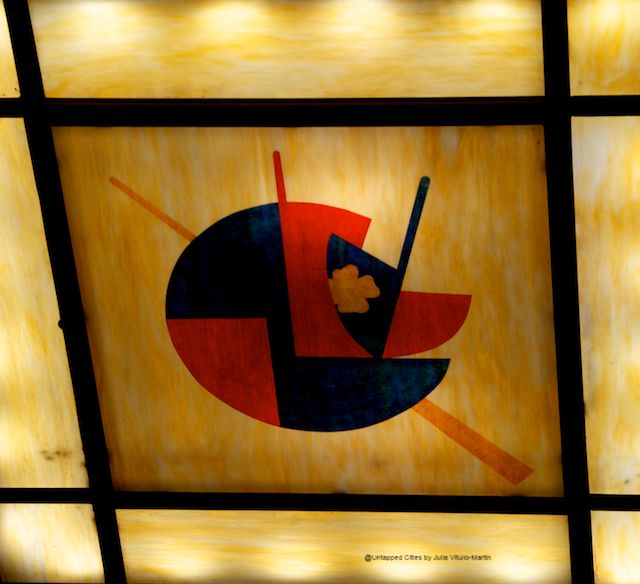
This all has a certain Mickey-Rooney-Judy-Garland (“Hey, kids, let’s put on a show”) ring to it–except that the neighborhood musicians included giants like Pinchas Zukerman and Claude Frank. Over the years they were joined by Itzhak Perlman, James Levine, Heather Watts, Merce Cunningham, Fritz Weaver, John Cage, Ron Carter, and other giants too numerous to mention.
The Symph’s special genius from Day 1 was what Claude Frank at that first Wall to Wall called participation: “the most important thing in music. If you participate you love it.” As the wild applause started dying down close to midnight, a man shouted out, “So now what are you gonna do?” Allan Miller recalled that they had no idea. For one thing, they were lacking that most precious of New York commodities: their own real estate.
Just because the West Side was a mess in the late ’70s, didn’t mean that its real estate was easy to acquire. The obstacles were many–starting with property taxes, which were often excessively high thanks to years of over-assessments in a declining market. Property taxes became the motivation for a seemingly odd agreement between the owners–Broadwest Realty, which had been operating at a net loss–and Symphony Space. “Broadwest wanted its property off the tax rolls,” recalls attorney Stephen L. Kass, whose former law firm, Berle Kass + Case, represented Symphony Space in the eventual litigation. “To get its property off the rolls, Broadwest suggested that Symphony Space, a not-for-profit, become the fee owner, with Broadwest leasing back the commercial space and retaining an option to repurchase. Broadwest thought it could have the best of both worlds–a tax exemption in the present and property appreciation in the future.”
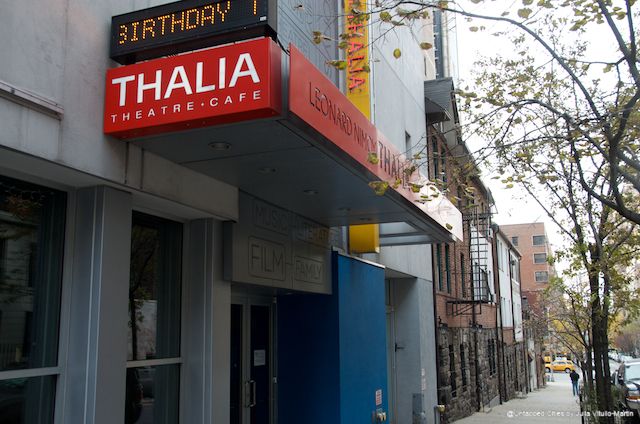
Symphony Space became the owner in December 1978 by paying Broadwest $10,000 via a purchase-money mortgage and $10 to be paid in cash at the closing. The parties also signed separate documents by which Broadwest leased back the entire building (except the theatre) for 24 years, until May 31, 2003, plus an option agreement by which Broadwest was given the exclusive right to repurchase all of the property, including the theatre.
This option agreement became the heart of a bitter legal dispute that was not resolved until June 13, 1996, when the New York State Court of Appeals ruled in favor of the Symph. Even in the disorderly context of the late 1970s, the deal was thorny. Broadwest retained liability for a $243,000 mortgage plus maintenance obligations. The sale-and-leaseback would save it some $30,000 annually in taxes, the trial court found, while allowing it to collect $140,000 in rental income. In 1981, Broadwest sold its interest in the lease and the option as well as the adjacent Pomander Walk and Healy Building to Pergola Properties for $4.8 million.
The options agreement was a sort of Sword of Damocles dangling by a thread over the Symph’s head. Pergola would take back the property when it had increased in value–and the Symph’s programming combined with West Side activism was helping to do just that. Ethel Sheffer–Isaiah’s wife and head of a community group, Blocks for a Better Broadway–was picketing to shut down the sleazy corner liquor store that was selling both to minors and to drunks. The Symph’s events–classic and contemporary music, jazz and blues, opera and operettas, ballet and African dance, follies and short stories–attracted regulars who not only enlivened the streets but who patronized nearby shops and restaurants.
What’s more, the Symph’s sheer joyousness proved to West Siders that they could indeed wrest their neighborhood back from the bad times on which it had fallen. After all, if Symphony Space could momentously “move fine music beyond the precincts of Lincoln Center, Carnegie Hall, and other major halls,” as New York Magazine noted, couldn’t West Siders reclaim what was theirs?
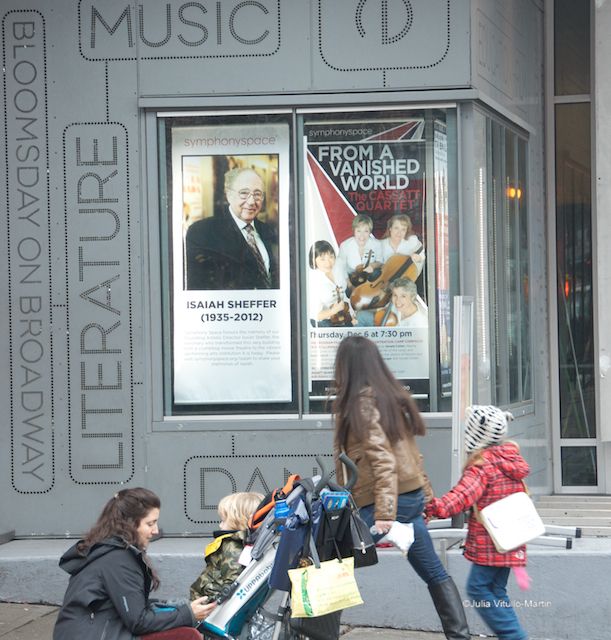
As Isaiah Sheffer continued the “slogging work of making this place happen,” says Ethel Sheffer, West Siders looked to their future. “They advocated for new zoning to direct future development and to ensure the preservation of the remarkable character of their historic neighborhood,” she recalls. “We had a strong sense that we didn’t want to look like the new towers going up elsewhere. We were actually successful, and the Koch administration did enact new zoning based on our efforts. Though far from perfect, that legislation really worked, since we managed to preserve brownstones and the wonderful mid-blocks while encouraging new buildings on avenues which resembled the great buildings that were already there. During the 70s and 80s, there were many social problems like crime, drugs, prostitution, neighborhood flight, but new and older residents felt that the West Side was basically an attractive place. A confluence of circumstances helped–the increased value of buildings, the mixed effects of the conversion of single-room-occupancy hotels, plus the parks, the subways, the streets–all the attributes of good city living could be renewed.”
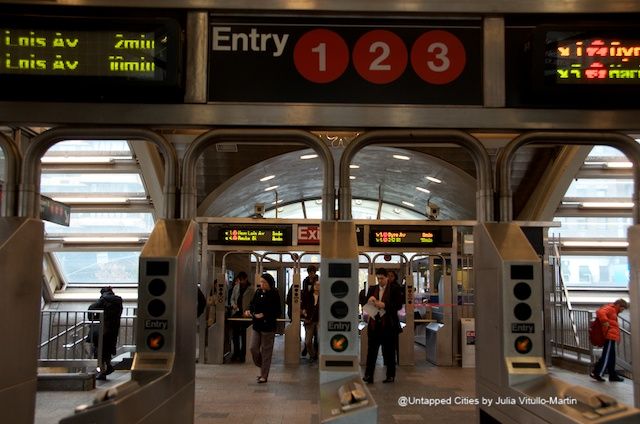
One result of the West Side renewing itself was that Pergola wanted the property back. They had gambled that the convoluted 1978 deal would prove worthwhile when they reclaimed the property in an up market. But instead they ran afoul of a 17th-century British legal principle, the Rule against Perpetuities, which seeks to ensure the productive use of property by limiting the “dead hand of landowners reaching into future generations.” (If you’ve seen the film The Descendants, you’ve been introduced to RAP.)
By New York State statute, which allows no more than 21 years for remote vesting, Pergola had used up too much time. Attorney Sylvie Richards, who has written a cogent summary of the case, says, “The logic was good on both sides. Symphony Space would benefit from occupying the property, and the owners would benefit from the nonprofit tax exemption. The owners intended at some point to exercise the repurchase option. The problem was that by the time they did this, it was beyond the statutory 21 years.” The legal issues were complicated, but thanks to the pro bono work of attorneys (Steven M. Alden of Debevoise & Plimpton, and Jean McCarroll and Steven Kass of Berle Kass + Case) Symphony Space won.
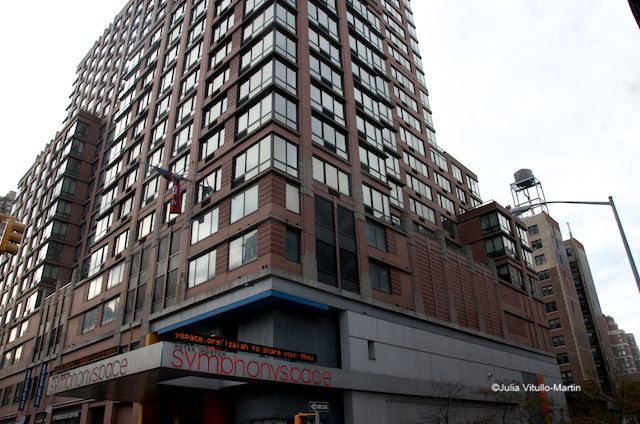
Once the Court of Appeals ruled that Symphony Space owned the entire property, the Symph became land rich, as they say in the business, but cash poor. Prominent real estate developers appeared–Millennium, Zeckendorf, Jeffries, and many more–proposing to tear down the theatre and replace it with a state-of-the-art below-ground facility, recalls Miller, which would have opened the entire block to new development. Isaiah was adamant about retaining the original theatre.
As Symphony Space then-board chair William Haines recaps the dilemma, “The question was how do we monetize our assets to produce an endowment? We needed to do the best possible business deal with a reliable developer who could deliver. If we chose a developer who went bankrupt in the middle we’d have had a disaster. And remember that the West Side was a territory unto itself. Nothing was a sure thing.”
The market had been strong in the late 1980s, when Haines, CEO of the Bromley Companies, opened the luxury tower called the Bromley at 83rd street and Broadway. And while the market fell in the early 1990s, by the mid-1990s it was percolating again, to use David Dunlap’s term in the New York Times. A further cash crisis erupted when Symphony Space received a bill for $770,000 in unpaid real estate taxes on Pergola’s commercial space–pushed up to $1.25 million by interest and fees.
In a complex arrangement with the Related Companies (“They know how to get things done,” says Haines), Symphony Space retained the auditorium and the Thalia while selling the air rights for some $10 million. From then forward, said Haines, “We could control our destiny because we controlled the real estate.”
An Area of City Failure No More West Siders reading the Jane Jacobs 1961 masterpiece, The Death and Life of Great American Cities, often feel a bit hurt by her harsh descriptions of their neighborhood as “an area of city failure,” marred by “self-isolating projects” and “stagnant, long, backwater blocks” within a “great blight of dullness.” She reserved her unkindest cut for Morningside Heights, calling it a “surly kind of slum.” But those charges of blight and dullness occurred before the creation of the Symph, with its 600+ yearly events, its renowned annual Bloomsday festival (threatened over the years by censorship), its Selected Shorts broadcast nationwide, its support of youngsters–young choreographers, dancers, musicians, singers–and its generous spirit of innovation and participation. People stream in and out of the Symph all day, every day, converting a once moribund corridor to a street as energetic as any in New York (including Jacobs’s adored Greenwich Village).
The West Side has changed so profoundly that when singer Pete Seeger joined an Occupy Wall Street protest after his 2011 concert at the Symph, the Associated Press unhesitantly said he “marched with throngs of people in New York City’s tony Upper West Side past banks and shiny department stores.” Even today your basic West Sider is likely to take umbrage, asking, “Hey, who you callin’ tony?”
Subscribe to our newsletter